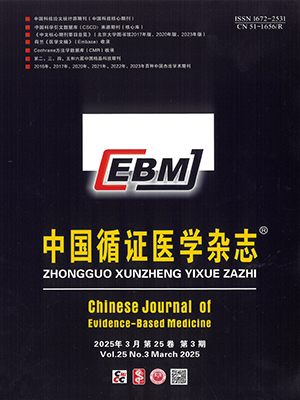Objective To assess the effectiveness and safety of Fushenqudu capsules in the treatment of chronic renal failure.
Methods The double blind, double dummy and randomized controlled method was adopted. One hundred and thirty one patients were randomized to the trial group (n=88, Fushenqudu capsule, 4 capsules, qid) and the control group (n =43, Shenshuaining capsules, 4 capsules, qid). The therapeutic duration for both groups was 8 weeks.
Results The results were analyzed on the basis of intention-to-treat. For effectiveness of treatment, the markedly effective rate was 27.3% (24/88); the total effective rate was 67.0% (59/88) in the treatment group; the markedly effective rate was 25.6% (11/43), the total effective rate was 58.1% (25/43) in the control group. There was no statistical difference between the two groups (P gt;0.05). For effectiveness of Pishenqixu syndrome, the markedly effective rate was 48.9% (43/88) and 53.3% (23/43) respectively in the trial and control groups. No statistically significant difference was tested between the two groups (P gt;0.05). Mild adverse effects occurred in two groups. When a smaller dose or termination of the drug were applied, the symptoms went. The tolerance was good when the patients took the medicine regularly.
Conclusions Fushenqudu capsules have the same clinical effect as Shenshuaining capsule with a little toxic adverse effects.
Citation:
QIU Hongyu,FU Ping,ZHOU Li,MI Xuhua,SHA Zhaohui,LI Zhing,ZHONG Hui,FAN Junming,TANG Wenfu,ZHANG Ruiming,LI Tingqian. Double Blind Randomized Controlled Trial of Fushenqudu Capsule in the Treatment of Chronic Renal Failure. Chinese Journal of Evidence-Based Medicine, 2006, 06(4): 254-260. doi:
Copy
Copyright © the editorial department of Chinese Journal of Evidence-Based Medicine of West China Medical Publisher. All rights reserved
| 1. |
郑筱庾.中药新药治疗慢性肾衰竭的临床研究指导原则.见:郑筱庾.主编.中药新药临床研究指导原则. 第1版. 北京: 中国医药科技出版社; 2002.
|
| 2. |
叶任高.慢性肾衰竭. 见:叶任高.主编.内科学.第5版.北京:人民卫生出版社; 1999. 569-579.
|
| 3. |
李福凤,王忆勤. 慢性肾功能衰竭中医辨证客观化研究进展. 上海中医药杂志, 2003;37(7):56-59.
|
| 4. |
孙升云; 杨钦河; 肖达民等. 慢性肾功能衰竭中医证候学的临床研究.新中医, 2005; 37(5): 30-31.
|
| 5. |
焦安钦, 傅兴兰. 慢性肾衰竭的病机特点与治疗对策. 山东中医药大学学报, 2001; 25(2): 90-92.
|
| 6. |
朱伟; 王学美. 大黄治疗慢性肾功能衰竭机制的研究进展.中国中西医结合杂志 , 2005;25(5):471- 475.
|
| 7. |
Zheng XY. Chinese principle of clinical research for new traditional herbs in treating chronic renal failure. In: Zheng XY. Chief editor. 1st edition. Beijing: Guiding Principles for Clinical Study of New Traditional Chinese Medicines; 2002.
|
| 8. |
Ye RG. Chronic Renal Failure. In: Ye RG. Chief editor. Internal Medicine. 5th Edition. Beijing: People’s Medical Publishing House; 1999. 569-579.
|
| 9. |
National Kidney Foundation Kidney:K/DOQI clinical practice guidelines for chronic kidney disease: evaluation, classification and stratification. Am J Kidney Disease, 2002; 39(suppl 1): S1-S266.
|
| 10. |
Li FF, Wang YQ. Progress of the objectification of hinese medical syndrome differentiation of chronic renal failure. Shanghai Journal of Traditional Chinese Medicine, 2003; 37(7) 56-59.
|
| 11. |
Sun SY, Yang QH, Xiao DM, et al. A Clinical Study on TCM Syndrome Patterns of Chronic Renal Failure. New Journal of Traditional Chinese Medicine, 2005; 37(5): 30-31.
|
| 12. |
Jiao AQ, Fu XL. Mechanism and treatment on chronic renal failure.Journal of Shandong University of Traditional Chinese Medicine, 2001; 25(2):90-92.
|
| 13. |
Zhu W, Wang XM. Progress in study on mechanisms of rhubarb in treating chronic renal failure. Chinese Journal of Integrated Traditional and Western Medicine, 2005;25(5): 471- 475.
|
- 1. 郑筱庾.中药新药治疗慢性肾衰竭的临床研究指导原则.见:郑筱庾.主编.中药新药临床研究指导原则. 第1版. 北京: 中国医药科技出版社; 2002.
- 2. 叶任高.慢性肾衰竭. 见:叶任高.主编.内科学.第5版.北京:人民卫生出版社; 1999. 569-579.
- 3. 李福凤,王忆勤. 慢性肾功能衰竭中医辨证客观化研究进展. 上海中医药杂志, 2003;37(7):56-59.
- 4. 孙升云; 杨钦河; 肖达民等. 慢性肾功能衰竭中医证候学的临床研究.新中医, 2005; 37(5): 30-31.
- 5. 焦安钦, 傅兴兰. 慢性肾衰竭的病机特点与治疗对策. 山东中医药大学学报, 2001; 25(2): 90-92.
- 6. 朱伟; 王学美. 大黄治疗慢性肾功能衰竭机制的研究进展.中国中西医结合杂志 , 2005;25(5):471- 475.
- 7. Zheng XY. Chinese principle of clinical research for new traditional herbs in treating chronic renal failure. In: Zheng XY. Chief editor. 1st edition. Beijing: Guiding Principles for Clinical Study of New Traditional Chinese Medicines; 2002.
- 8. Ye RG. Chronic Renal Failure. In: Ye RG. Chief editor. Internal Medicine. 5th Edition. Beijing: People’s Medical Publishing House; 1999. 569-579.
- 9. National Kidney Foundation Kidney:K/DOQI clinical practice guidelines for chronic kidney disease: evaluation, classification and stratification. Am J Kidney Disease, 2002; 39(suppl 1): S1-S266.
- 10. Li FF, Wang YQ. Progress of the objectification of hinese medical syndrome differentiation of chronic renal failure. Shanghai Journal of Traditional Chinese Medicine, 2003; 37(7) 56-59.
- 11. Sun SY, Yang QH, Xiao DM, et al. A Clinical Study on TCM Syndrome Patterns of Chronic Renal Failure. New Journal of Traditional Chinese Medicine, 2005; 37(5): 30-31.
- 12. Jiao AQ, Fu XL. Mechanism and treatment on chronic renal failure.Journal of Shandong University of Traditional Chinese Medicine, 2001; 25(2):90-92.
- 13. Zhu W, Wang XM. Progress in study on mechanisms of rhubarb in treating chronic renal failure. Chinese Journal of Integrated Traditional and Western Medicine, 2005;25(5): 471- 475.




